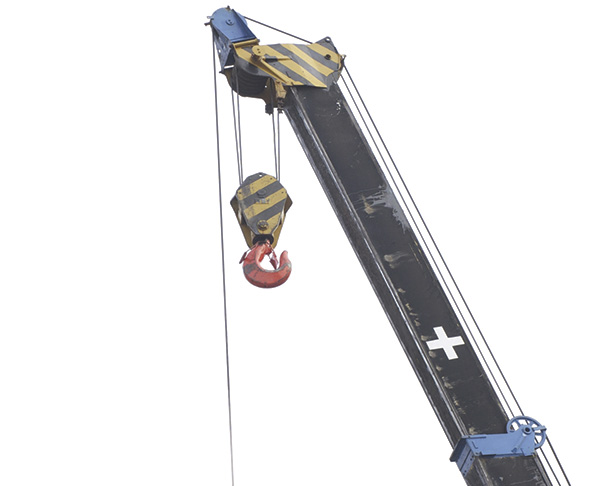According to OSHA, accidents during assembly and disassembly of lattice boom and tower cranes are one of the major causes of crane-related fatalities. Hydraulic-boom cranes are not generally assembled on-site, but the proper setting of outriggers and stabilizers is required under section 1404(q) of the new standard.
Because various construction trades regularly work with, on or around cranes during assembly and disassembly, contractors must recognize the expanded scope of the new federal regulations.
New Responsibilities
The new rule requires the work to be directed by an A/D (assembly/disassembly) director. The A/D director must meet the criteria for both a “competent person” and a “qualified person” or must be a competent person assisted by a qualified person. .)

In addition to the requirement that the A/D director must understand the applicable procedures, he or she must review the procedures immediately prior to beginning the work unless he or she understands them and has used them before for that equipment type and configuration. Additionally, the A/D director must ensure that each member of the crew understands his or her tasks, the hazards of the tasks and any hazardous locations to avoid. The A/D director must verify all capacities of any equipment used, including rigging, lifting, lugs, etc. The A/D director must also address hazards associated with the operation, including 12 specified areas of concern: site and ground conditions, blocking material, proper location of blocking, verifying assist crane loads, boom and jib pick points, center of gravity, stability upon pin removal, snagging, struck by counterweights, boom hoist brake failure, loss of backward stability, and wind speed and weather.
Upon completion of assembly—but before use—a “qualified person” must inspect the equipment to ensure that it is configured in accordance with the manufacturer’s equipment criteria. If these criteria are unavailable, the employer’s “qualified person,” with the assistance of a registered professional engineer if necessary, must develop the appropriate configuration criteria and ensure that these criteria are met.
General Requirements
A crew member who moves out of the operator’s view to a location where the crew member could be injured by movement of the equipment (or load) must inform the operator before going to that location. The operator must not move the equipment until that crew member informs the operator that he or she has relocated to a safe position. Employees must never be under the boom or jib when pins (or similar devices) are being removed, unless it is required by site constraints and the A/D director has implemented procedures that minimize the risk of unintended movement and the duration and extent of exposure under the boom. Component weights must be readily available for all components to be assembled. All rigging must be done by a “qualified rigger.” Pins may not be removed during disassembly when the pendants are in tension. Booms supported only by cantilevering must not exceed manufacturer limitations or registered professional engineer (RPE) limitations, as applicable. Component selection and equipment configuration that affect the capacity or safe operation of the equipment must be in accordance with manufacturer requirements and limits or RPE requirements and limits, as applicable.
Outriggers and Stabilizers
When outriggers or stabilizers are necessary for the load to be handled and the operating radius, outriggers and stabilizers must be fully extended or, if permitted by manufacturer procedures, deployed as specified in the load chart. Outriggers must be set to remove equipment weight from the wheels, except for locomotive cranes. Outrigger floats, if used, must be attached to the outriggers; stabilizer floats, if used, must be attached to the stabilizers. Each outrigger or stabilizer must be visible to the operator or to a signal person during extension and setting. Outrigger and stabilizer blocking must be placed under the float/pad of the jack or, if there is no jack, under the outer bearing surface of the outrigger or stabilizer beam. Blocking also must be sufficient to sustain the loads and maintain stability, and it must be properly placed.
Conclusion
The first three parts of this series identified key elements of the new OSHA crane standard that can most significantly impact general contractors, power line utility companies, subcontractors and the crane company.
These assembly/disassembly requirements will have an equal impact on various trade contractors and general contractors based on OSHA’s expanded enforcement capability.
The new standard also imposes additional planning requirements on contractors working at jobsites where multiple cranes are operating in close proximity. This requirement places an added layer of responsibility on the general contractor because it will require a higher level of situational awareness of where each crane is working.
